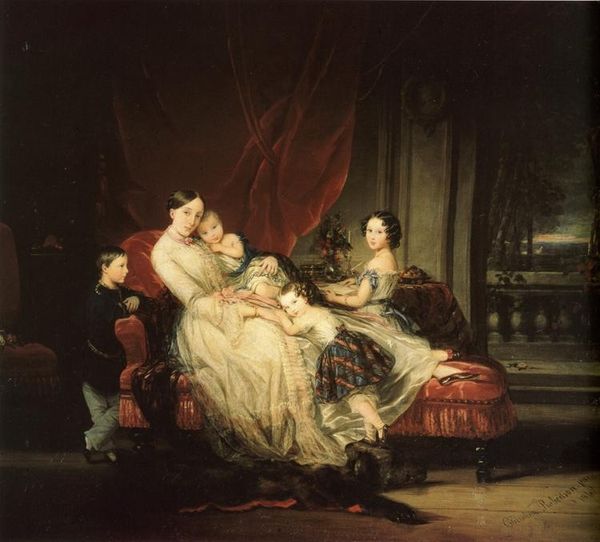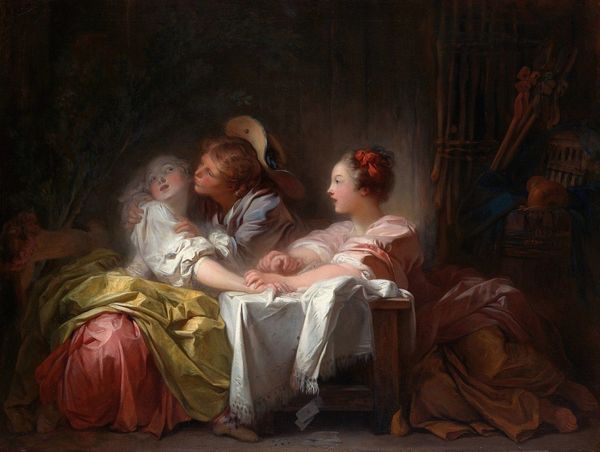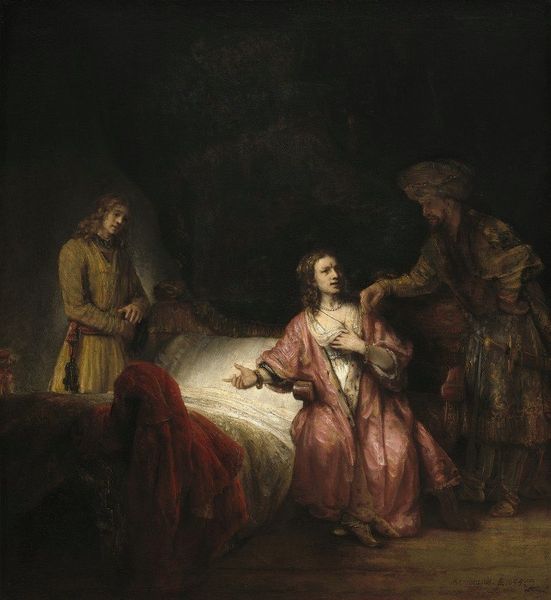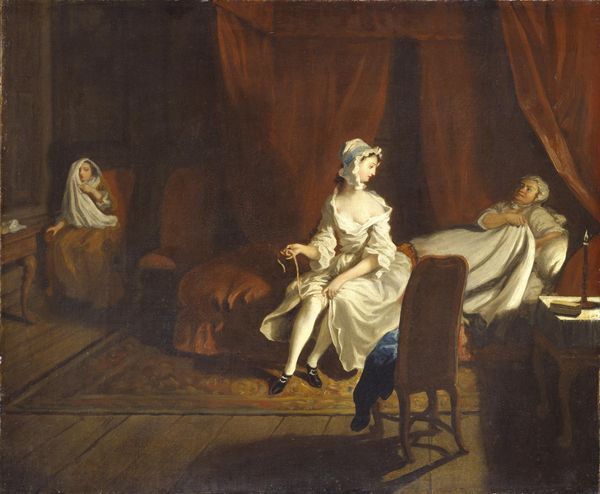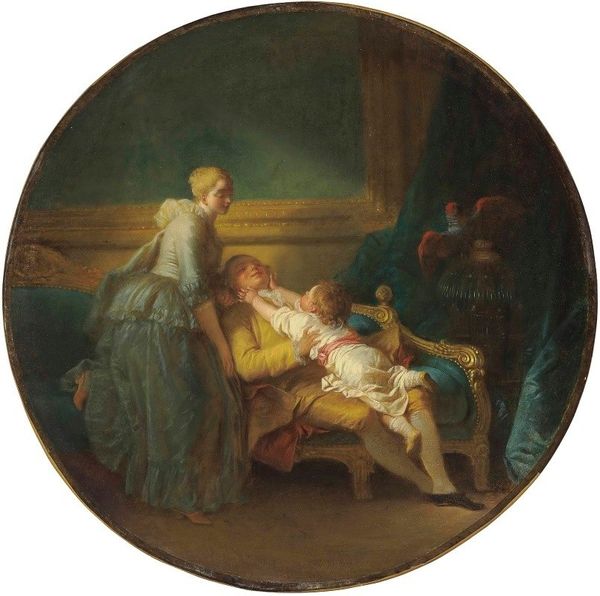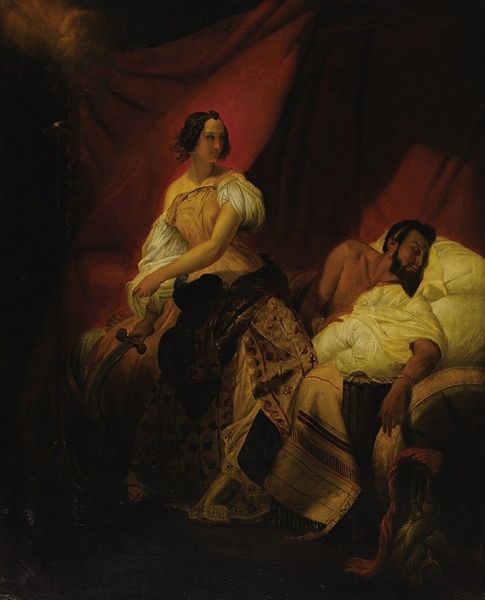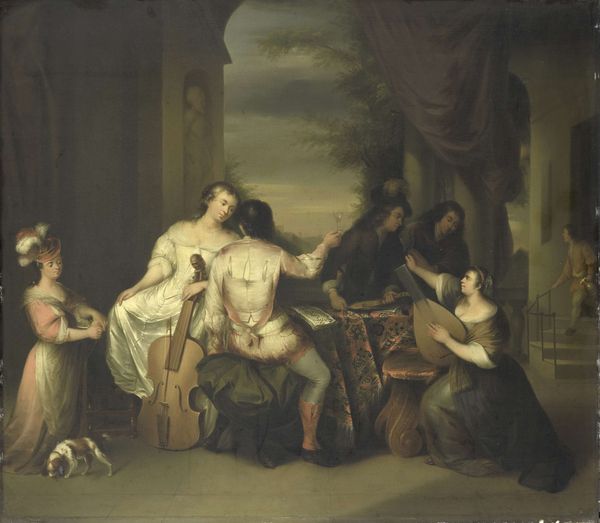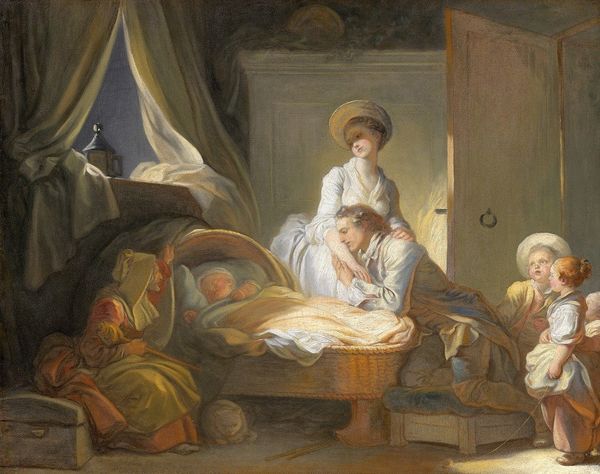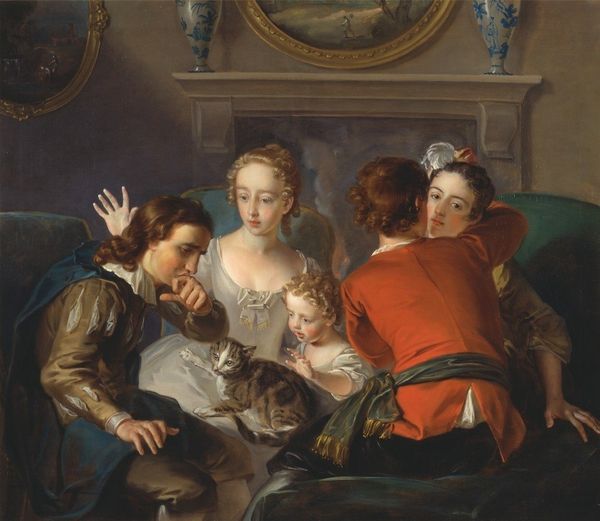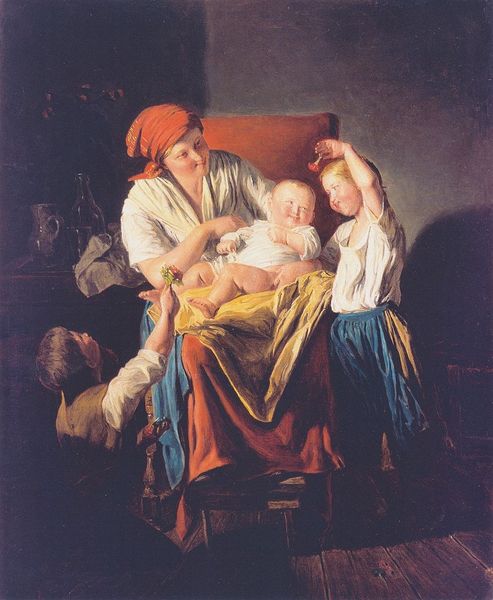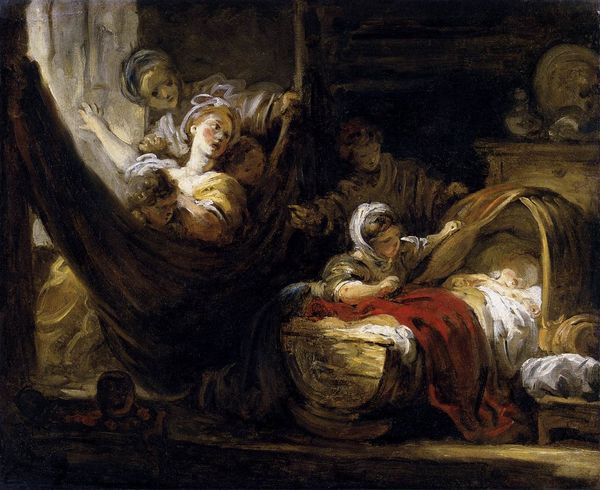
Jacob Blessing the Children of Joseph 1656
0:00
0:00
rembrandtvanrijn
Gemäldegalerie Alte Meister, Dresden, Germany
painting, oil-paint
#
portrait
#
narrative-art
#
baroque
#
dutch-golden-age
#
painting
#
oil-paint
#
oil painting
#
group-portraits
#
genre-painting
#
history-painting
Dimensions: 210.5 x 175.5 cm
Copyright: Public domain
Curator: We're looking at Rembrandt van Rijn's *Jacob Blessing the Children of Joseph*, painted in 1656. It currently resides in the Gemäldegalerie Alte Meister in Dresden. Editor: The first thing that strikes me is the palpable weight of the oil paint itself. Look how Rembrandt manipulates light and shadow! You can almost feel the texture of the heavy fabric and the worn fur. It seems like material density is a part of the meaning itself. Curator: It’s interesting you say that. Rembrandt’s handling of paint is incredibly physical, isn’t it? It mirrors the touching scene of blessing depicted in the piece. You have this elderly Jacob bestowing blessings on his grandchildren. There’s this sense of tender intimacy amidst the shadowy darkness. Editor: Intimacy yes, and what kind of intimacy is being sold to who, and at what price? This feels to me like Dutch Golden Age commodity painting in the sense that all of that thick impasto relies on very real pigment – the labor to produce, to mix, to apply, as well as who could even buy the raw materials to begin with. It’s very bourgeois in that way. Curator: A poignant point, indeed. We are looking through a distinctly Dutch lens here, aren’t we? The use of clothing to denote social status is prevalent throughout much of Dutch painting, too. You have Joseph standing proudly in his turban, his wife wearing delicate jewelry. The texture also contributes a feeling of age; perhaps a reflection of their time? Editor: Texture also hides things – look at that murky, shadowy background. I feel like what we *don’t* see is just as important. Whose labor built Jacob’s house? Who cleans the paint brushes? What kind of underpainting is this, anyway? It seems to me this painting is just as much about making invisible the labor of production as it is a story. Curator: I wonder if Rembrandt meant to draw our attention there? Or perhaps he's subtly nodding to these underlying elements, as much as his focus remained primarily in creating the emotionally charged narrative scene itself. Maybe the darkness frames and deepens those expressions of tenderness, the frailty of Jacob, the innocent faith of the children. It truly prompts you to reflect, doesn’t it? Editor: Yes, in Rembrandt's hands, even a genre painting is about commerce. He is blessing more than Jacob’s grandkids: his painting could bestow him with success. Curator: An art that allows one to dwell between heaven and earth. Thanks for that, editor.
Comments
No comments
Be the first to comment and join the conversation on the ultimate creative platform.
